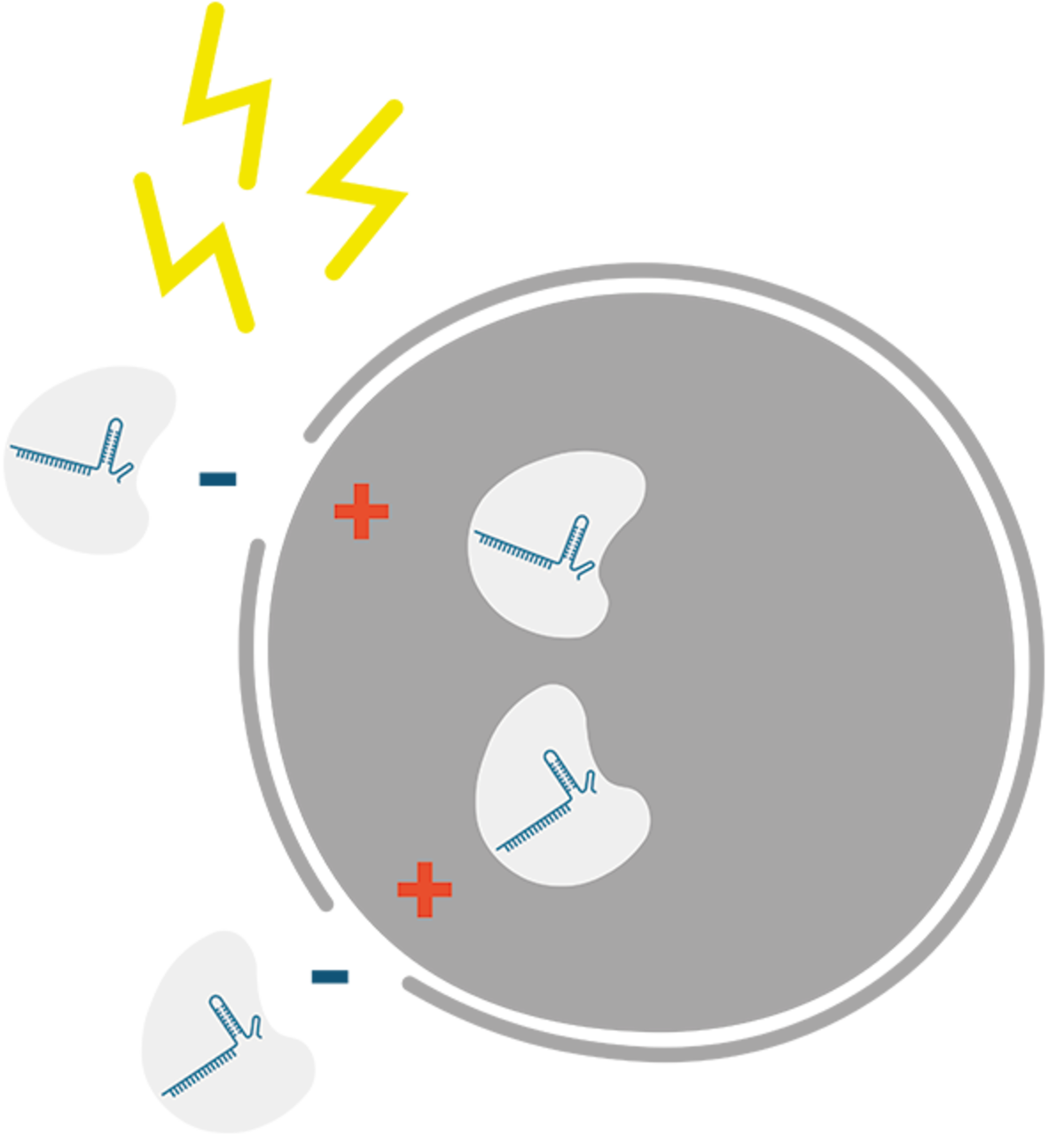Transfection for CRISPR
There are a number of methods for expressing a Cas nuclease and its associated gRNA in cells, which can be classified into physical, chemical and viral-mediated methods. The most common approaches are:
- Lipofection
- Electroporation and nucleofection
- Microinjection
- Viral-mediated delivery
Please keep in mind that for RNP complexes generated with IDT’s Alt-R© CRISPR systems, only lipofection, electroporation/nucleofection and microinjection are viable options.
Transient vs stable transfection
| Transient transfection | Stable transfection | |
|---|---|---|
Principle | Lipofection, electroporation/nucleofection or microin- jection of RNP complexes or expression plasmids | Lipofection, electroporation/nucleofection or microin- jection of expression plasmids, viral transduction |
Advantages | Easy to achieve No screening for Cas9 and/or guide RNA expressing cells needed Lower risk of off-target edits due to transient expres- sion of Cas9 nuclease | Ideal if long-term expression of CRISPR components is needed |
Limitations | Switching guide RNAs requires repeating the entire transfection procedure | Requires selection via e.g. antibiotic selection or FACS sorting, followed by expansion |
Cas9 Electroporation Enhancer
Purified carrier DNA that improves delivery of Cas9 ribonucleoprotein (RNP) by electroporation (see data in the «Performance» section of our «CRISPR» web page). Specifically designed to avoid homology to human, mouse and rat genomes.
| Cat-No. | Enhancer | Size | Comments |
|---|---|---|---|
| 1075915 | Alt-R® Cas9 Electroporation Enhancer | 2 nmol | Purified carrier DNA. |
For research use only. Not for use in diagnostic procedures. Unless otherwise agreed to in writing, IDT does not intend for these products to be used in clinical applications and does not warrant their fitness or suitability for any clinical diagnostic use. Purchaser is solely responsible for all decisions regarding the use of these products and any associated regulatory or legal obligations.

